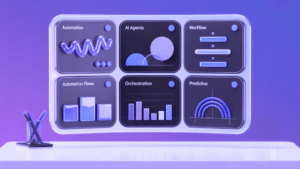The most successful automotive campaigns in 2025 are redefining how brands connect with consumers and drive measurable business results. While some automotive brands consistently capture massive attention and drive sales with every campaign, others struggle to break through despite huge advertising budgets. The difference isn’t just about spending more—it’s about understanding what actually resonates with modern consumers and executing automotive campaigns that create genuine cultural impact.
With 97.5 million Filipino internet users spending 8 hours and 52 minutes daily online and the Philippine automotive market growing by 6-7% in early 2025, the competition for attention has never been more intense. However, the automotive campaigns breaking through aren’t necessarily the loudest ones—they’re the ones applying proven strategies that blend emotional storytelling, technological innovation, and authentic brand positioning.
After analyzing media coverage across hundreds of automotive campaigns and tracking their performance metrics, we’ve identified the approaches that are actually moving the needle in 2025. These aren’t just creative executions—they’re strategic automotive campaigns that demonstrate measurable ROI and lasting brand impact.
Here are the automotive campaigns setting the standard:
1. Tesla’s “Full Self-Driving (FSD)” – User-Generated Innovation Showcase
Tesla‘s ongoing FSD campaign demonstrates how to turn your customers into your most effective marketing channel. Rather than traditional advertising, Tesla relies on real-world demonstrations and authentic user experiences to showcase technological capabilities.
Strategic execution elements:
- Real-world proof: Customers sharing actual FSD experiences across diverse driving conditions
- Community amplification: Elon Musk and brand advocates amplifying user-generated content
- Continuous narrative: Each software update becomes a marketing moment
- Transparency approach: Honest documentation of both successes and limitations builds credibility
Performance metrics: Tesla’s approach generates massive viral attention through user-generated FSD content, with livestreams and product reveals consistently trending across social platforms and garnering hundreds of thousands to millions of interactions. Their direct-to-consumer model creates sustained engagement rather than campaign-specific spikes.
Digital marketing insight: Tesla proves that authentic user experiences often outperform polished advertising. Their approach turns product development into ongoing marketing content, creating sustained engagement rather than campaign-specific spikes.
2. Volvo Trucks’ “A Table Set for Change” – B2B Storytelling That Works
Volvo Trucks partnered with celebrity chef Marcus Samuelsson to create a campaign that connected electric trucking to real business outcomes. This B2B campaign succeeded by making industrial transportation emotionally relevant and business-relevant simultaneously.
Campaign innovation highlights:
- Unexpected partnerships: Celebrity chef collaboration brought credibility and media attention
- Business value connection: Demonstrated how clean transportation impacts supply chains and food quality
- Experiential elements: Pop-up dining experiences showcased the connection between transportation and business results
- Industry leadership positioning: Established Volvo as the sustainability leader in commercial vehicles
Results that matter: The campaign drove consumer consideration 8 points higher among higher-income Americans and significantly outperformed luxury auto ad benchmarks. The combination of emotional storytelling with sustainability leadership generated strong B2B interest and qualified lead generation.
Agency takeaway: B2B automotive marketing doesn’t have to be boring. By connecting industrial products to consumer outcomes and using unexpected creative approaches, Volvo created content that worked for both trade and consumer media.
3. Chevrolet’s “100th Anniversary: Always Heading Towards the Future” (Brazil)
Chevrolet‘s centenary campaign in Brazil successfully balanced heritage storytelling with forward-looking innovation. This multi-channel approach demonstrates how automotive brands can leverage history while staying relevant to modern consumers.
Strategic campaign components:
- Heritage storytelling: High-production film celebrating 100 years of Brazilian automotive culture
- Modern relevance: Connected historical moments to contemporary consumer needs
- Multi-platform execution: Coordinated content across TV, digital, out-of-home, and social media
- Cultural connection: Tied brand story to broader Brazilian national identity and progress
Campaign performance: Achieved extensive national media coverage and widespread recognition through coordinated broadcast, digital, and print elements. The campaign successfully positioned Chevrolet as both a heritage brand and a forward-thinking automotive leader in the Brazilian market.
Marketing strategy lesson: Anniversary campaigns work when they connect past achievements to future possibilities. Chevrolet didn’t just celebrate history; they used it to reinforce their commitment to continued innovation and customer value.
4. Ford Mustang’s “60th Anniversary Edition” – Heritage Marketing That Drives Sales
Ford’s Mustang anniversary campaign leveraged six decades of American automotive culture while creating immediate purchase urgency through special edition models and exclusive content experiences.
Execution excellence elements:
- Nostalgia with purpose: Throwback design cues connected to contemporary performance improvements
- Community engagement: Deep integration with existing Mustang enthusiast communities
- Exclusivity creation: Limited edition models and special access experiences
- Digital-physical integration: Online content supporting dealership experiences and special events
Measurable impact: Generated significant increase in Mustang consideration among previous owners and notable boost in overall Ford brand favorability. Special edition models experienced high demand with strong sales performance across dealership networks.
Creative strategy insight: Heritage marketing works best when it creates both emotional connection and tangible value. Ford didn’t just celebrate the past—they gave consumers exclusive ways to participate in Mustang culture while driving immediate sales results.
5. Toyota’s “Your Window to the Wild” (4Runner) – Adventure Marketing That Feels Authentic
Toyota’s 4Runner campaign successfully connected rugged capability with family adventure aspirations through emotionally driven storytelling that felt genuine rather than manufactured.
Authentic storytelling approach:
- Real family experiences: Showcased actual outdoor adventures rather than staged scenarios
- Capability demonstration: Integrated vehicle features naturally into adventure narratives
- Emotional resonance: Connected outdoor exploration to family bonding and personal growth
- Modern relevance: Balanced ruggedness with contemporary technology and safety features
Performance results: The campaign resonated strongly with young families and outdoor enthusiasts seeking reliable adventure vehicles. Toyota succeeded by making outdoor exploration feel accessible and meaningful for regular families, positioning the 4Runner as the ideal vehicle for family adventure.
Content marketing takeaway: Adventure marketing works when it focuses on authentic experiences rather than extreme scenarios. Toyota succeeded by making outdoor exploration feel accessible and meaningful for regular families, not just extreme athletes.
The Pattern Behind Successful Automotive Campaigns — Data-Driven Personalization
While not featuring a single brand, the most successful automotive campaigns in 2025 share a common thread: sophisticated use of data to create personalized experiences that feel individually relevant rather than mass-marketed.
Emerging success patterns:
- Behavioral targeting: Using actual driving data and lifestyle information to customize messaging
- Dynamic creative optimization: Real-time content adjustment based on audience response and engagement
- Journey-stage personalization: Different messaging for awareness, consideration, and purchase phases
- Cross-platform attribution: Measuring impact across all touchpoints to optimize spend allocation
Industry transformation insight: Automotive brands achieving breakthrough results are moving beyond demographic targeting toward behavioral and psychographic personalization that creates individual relevance at scale.
What These Automotive Campaigns Reveal About Modern Marketing
Analyzing these breakthrough campaigns, three clear trends emerge that every automotive marketer should understand:
Authenticity beats perfection. Consumers respond more strongly to genuine experiences and honest storytelling than polished but artificial content. The campaigns generating real business results prioritize authenticity over production values.
Community engagement drives performance. Whether through user-generated content, enthusiast communities, or cultural connections, successful campaigns create opportunities for active participation rather than passive consumption.
Technology integration is table stakes. Modern automotive marketing requires sophisticated measurement, personalization, and cross-platform optimization. Breakthrough campaigns use data and technology to enhance creativity, not replace it.
The Implementation Reality for Marketing Teams
Creating breakthrough automotive campaigns requires systematic execution, not just creative inspiration. Here’s how successful marketing teams actually structure their approach:
Monthly strategic planning:
- Analyze competitor campaign performance and identify differentiation opportunities
- Develop 3-5 campaign concepts with clear business objectives and success metrics
- Plan content production timelines that allow for quality creation and optimization testing
- Coordinate across paid, owned, and earned media channels for maximum impact
Weekly execution focus:
- Monitor campaign performance across all platforms and optimize based on real-time data
- Engage with user-generated content and community responses to amplify organic reach
- Track competitor activities and industry trends for reactive content opportunities
- Report performance metrics that connect marketing activities to business outcomes
Campaign measurement essentials:
- Track both brand metrics (awareness, consideration, favorability) and business metrics (leads, sales, retention)
- Monitor share of voice compared to competitors during campaign periods
- Measure engagement quality, not just volume, to understand authentic audience connection
- Analyze attribution across the entire customer journey, not just final touchpoints
The Implementation Reality for Automotive Campaigns
The automotive marketing landscape has fundamentally shifted. Consumers research online extensively before visiting dealerships, social media influences purchase decisions significantly, and authentic reviews matter more than brand messaging for final purchase choices.
Successful automotive brands understand that breakthrough campaigns require consistently providing value to audiences throughout their decision-making process. This means creating content that educates, entertains, and builds trust while demonstrating clear product benefits and brand values.
The campaigns profiled here work because they align with how modern consumers actually make automotive decisions, not how marketers wish they worked. They recognize that today’s car buyers want authentic experiences, genuine community connections, and clear value demonstration—not just impressive specifications or lifestyle aspiration.
Key success indicators to track:
- Customers sharing your content organically without incentives
- Engagement rates that exceed industry benchmarks consistently
- Media coverage and earned mentions that expand campaign reach
- Business metrics improving measurably following campaign launches
For marketing professionals working in automotive, breakthrough campaigns happen when you combine emotional resonance with clear business value. The brands achieving consistent success build systematic approaches that deliver ongoing value to audiences while creating measurable ROI and lasting brand preference.
With 97.5 million Filipino online users consuming automotive content daily, the opportunity for breakthrough campaigns has never been greater. Success requires strategic thinking, authentic execution, and sophisticated measurement—but the results speak for themselves in both brand building and sales impact.
Frequently Asked Questions
How long does it typically take to see results from automotive marketing campaigns? Most successful automotive campaigns show initial engagement metrics within 2-3 weeks, with consideration and purchase intent improvements visible at 6-8 weeks. However, lasting brand impact and sustainable sales improvements typically require 3-6 months of consistent execution.
What’s the ideal budget allocation between traditional and digital automotive marketing? Leading automotive brands now allocate 60-70% of marketing budgets to digital channels, with the remainder supporting traditional media that amplifies digital efforts. The key is ensuring all channels work together rather than competing for attention.
How important is user-generated content for automotive marketing success? Essential—automotive UGC generates significantly higher engagement than brand-created content and influences purchase decisions substantially. Successful campaigns create opportunities for customer participation and authentic sharing.
Should automotive campaigns focus more on features or emotional benefits? The breakthrough campaigns combine both strategically: leading with emotional benefits that resonate with lifestyle aspirations, then supporting with feature demonstrations that justify the emotional connection rationally.
How do we measure ROI beyond traditional sales attribution for automotive campaigns? Track brand health metrics (awareness, consideration, favorability), engagement quality, share of voice versus competitors, and customer lifetime value improvements. Modern automotive marketing creates value beyond immediate sales through brand building and customer retention.
What’s the best approach for competing against Tesla’s marketing innovation? Focus on your authentic brand strengths rather than copying Tesla’s approach. Successful competitors create their own category definitions and community experiences that align with their brand values and customer needs.
With Media Meter’s comprehensive automotive industry monitoring, you can track competitor campaign performance, identify trending opportunities, and measure your brand’s share of voice across all media channels. Contact us for campaign performance insights or view our sample media reports to see how we can help optimize your automotive marketing strategy.





